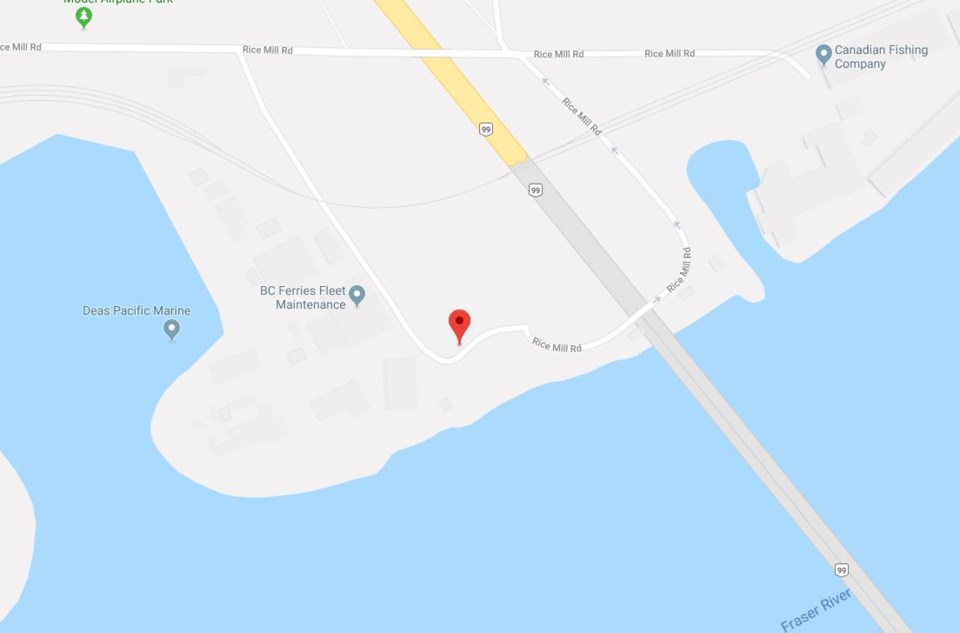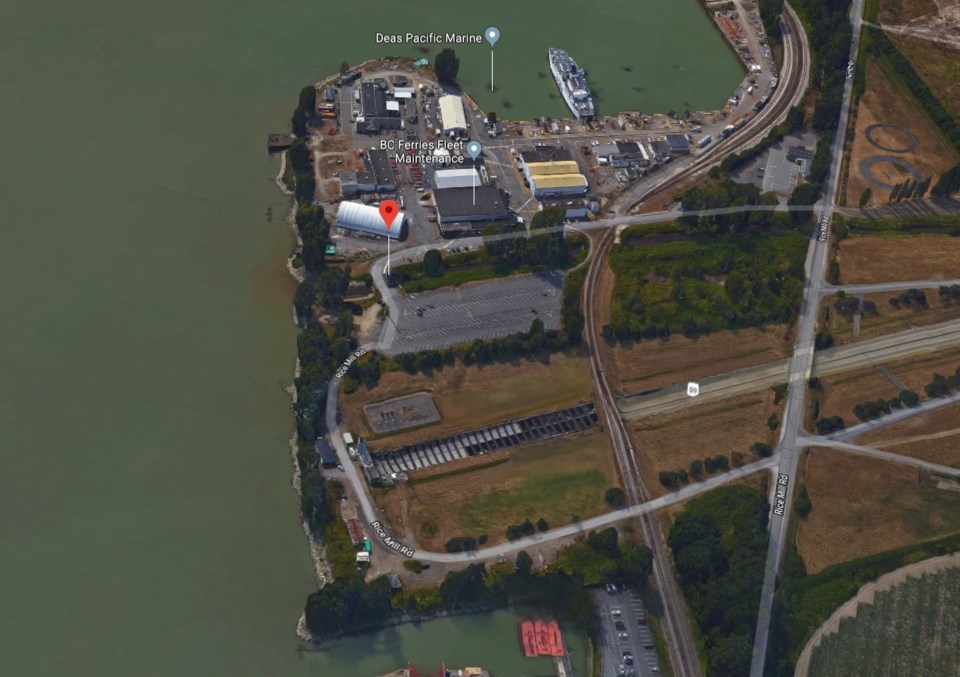The City of Richmond is suing BC Hydro, claiming the corporation risked the safety of the city’s dike system while building giant towers as part of the doomed Massey Tunnel Replacement Project.
The city filed the lawsuit at the BC Supreme Court two weeks ago, alleging BC Hydro was negligent during the laying of stone foundations in 2017 on the west side of Highway 99, where it meets the tunnel and the south arm of the Fraser River.
According to the court documents, despite repeated warnings from the city, the crown corporation continued ground densification work for the hydro tower, close to the city’s Peace Arch Drainage Pump Station on Rice Mill Road.
As such, alleges the suit, some areas in and around the station suffered ground settlements of up to 100mm, raising fears for the integrity of the city’s dike system.

BC Hydro was building two, 120-metre-high steel transmission towers, on either side of the river, to reroute power lines from the tunnel, which was in the process of being replaced at the time.
Prior to the ground densification work kicking off in July 2017, a report compiled by a BC Hydro engineer expected minor ground settlement in the area of the station of no more than 15mm.
The work involved the injection of air and water into soils, followed by the vibratory installation of 30-metre-long stone columns.
However, by the end of that month, the city claims the settlement had spiked to 25 to 40mm, with a further 20mm to 60mm by Aug. 3.
According to the suit, the city warned BC Hydro that the “total settlement to date would create a structural concern if settlement did not slow down.”
Less than a week later, with densification work still going on, it’s alleged that the “differential settlement” had risen to 75mm.
About Aug. 14 that year, the city requested BC Hydro stop the work altogether to avoid further damage. BC Hydro complied, according to the suit.
The city then told BC Hydro it was, on the back of professional engineering advice, going to perform “urgent remedial work” to prevent further damage and it would be billing BC Hydro accordingly.
A week later the city requested BC Hydro provide a plan to avoid further damage to its “Flood Protection Infrastructure” prior to resuming any ground densification work.
According to the court documents, however, a couple of weeks later, on Sept. 5, BC Hydro – without providing the city with a plan or even notifying the city – resumed the densification operation.
The law suit claims that the work went on for another week, and only stopped when the tunnel replacement project was cancelled by the new NDP government.
It’s claimed that about 30 per cent of the stone columns had been installed.
The city then requested BC Hydro to repair the further damage it had caused, which, according to the suit, the crown corporation refused to do.
And, by October, with the winter king tide and storm surge season on the horizon and fearing for the integrity of the dike, the city told BC Hydro it would have to do the repairs itself.
The suit states that the city has provided BC Hydro with a list of the costs associated with repairing the damage, which it has refused to pay.
“As a result of the negligence of BC Hydro, the city has suffered losses, damage and expense,” the lawsuit reads.
The city is seeking unspecified general and special damages, as well as costs.
None of the claims alleged in the lawsuit have been proven in court. By 5 p.m. on Tuesday, BC Hydro had yet to file a response.
A spokesperson for BC Hydro said, for legal reasons, he couldn’t “comment specifically on the claim to cover costs for remediation work completed at the Peace Arch Pump Station and dyke.
“We will be responding to the claim and are engaging with the City of Richmond to work towards a resolution.”
The city didn’t want to comment further when contacted by the Richmond News.
Work was suspended on the project in September, 2017 and a further decision on the future of the tunnel replacement is expected next year from the B.C. government.
Back in 2016, BC Hydro’s project manager, Navreet Kooner, described to the News how the overhead tower option had the lowest construction risk and had a low environmental impact.
Other alternatives included an underground transmission line running under the Fraser River or a transmission line located on the bridge itself.



